Abstract
Purpose
Materials and Methods
Results
ACKNOWLEDGEMENTS
Notes
AUTHOR CONTRIBUTIONS:
Conceptualization: Chul Kyu Roh, Yoon Young Choi, Jae-Ho Cheong.
Data curation: Chul Kyu Roh, Yoon Young Choi, Seohee Choi, Won Jun Seo, Minah Cho, Taeil Son, Hyoung-Il Kim, Woo Jin Hyung, Sung Hoon Noh, Jae-Ho Cheong.
Formal analysis: Chul Kyu Roh, Yoon Young Choi.
Funding acquisition: Sung Hoon Noh, Jae-Ho Cheong.
Investigation: Chul Kyu Roh, Yoon Young Choi, Seohee Choi, Won Jun Seo, Minah Cho, Taeil Son, Hyoung-Il Kim, Woo Jin Hyung, Sung Hoon Noh, Jae-Ho Cheong.
Methodology: Yoon Young Choi, Eunji Jang, Hyeseon Kim.
Project administration: Yong-Min Huh, Jae-Ho Cheong.
Resources: Chul Kyu Roh, Yoon Young Choi, Seohee Choi, Won Jun Seo, Minah Cho, Taeil Son, Hyoung-Il Kim, Woo Jin Hyung, Sung Hoon Noh, Jae-Ho Cheong.
Software: Chul Kyu Roh, Yoon Young Choi, Eunji Jang, Hyeseon Kim.
Supervision: Jae-Ho Cheong.
Validation: Chul Kyu Roh, Yoon Young Choi, Seohee Choi, Won Jun Seo, Minah Cho, Taeil Son, Hyoung-Il Kim, Woo Jin Hyung, Sung Hoon Noh, Jae-Ho Cheong.
Visualization: Chul Kyu Roh, Yoon Young Choi.
Writing—original draft: Chul Kyu Roh, Yoon Young Choi, Eunji Jang.
Writing—review & editing: Jae-Ho Cheong.
References
Fig. 1
Kaplan-Meier and log-rank comparisons of DFS in patients with stage II/III gastric cancer according to (A) status of MSI and SPC-prognosis, (B) status of EBV and SPC-prognosis, (C) EBV status and treatment. DFS, disease-free survival; MSI, microsatellite instability; SPC, single patient classifier; MSS, microsatellite stable; MSI-L, microsatellite instability-low; MSI-H, microsatellite instability-high; EBV, Epstein-Barr virus; CTx, adjuvant chemotherapy (capecitabine plus oxaliplatin).
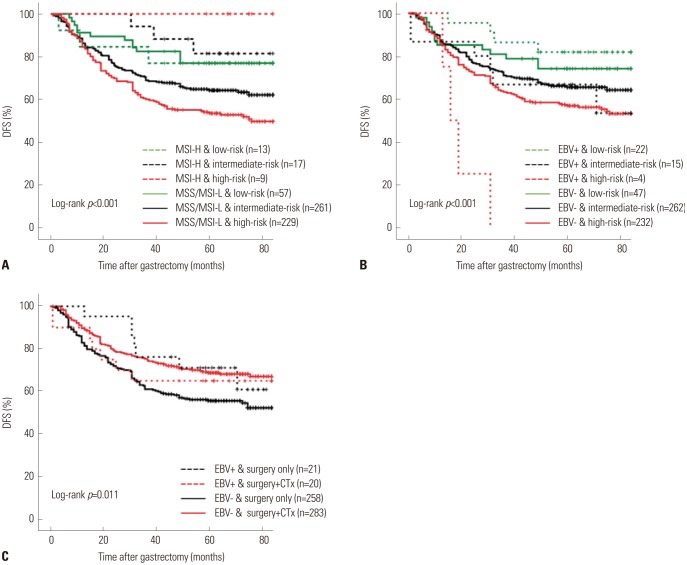
Fig. 2
Kaplan-Meier and log-rank comparisons of DFS in patients with stage II/III gastric cancer following treatment in subgroups of (A) MSS/MSI-L and SPC responder group, (B) MSS/MSI-L and SPC non-responder group, (C) EBV-negative and SPC responder group, and (D) EBV-negative and SPC non-responder group. DFS, disease-free survival; CTx, adjuvant chemotherapy (capecitabine plus oxaliplatin); MSS, microsatellite stable; MSI-L, microsatellite instability-low; SPC, single patient classifier; EBV, Epstein-Barr virus.
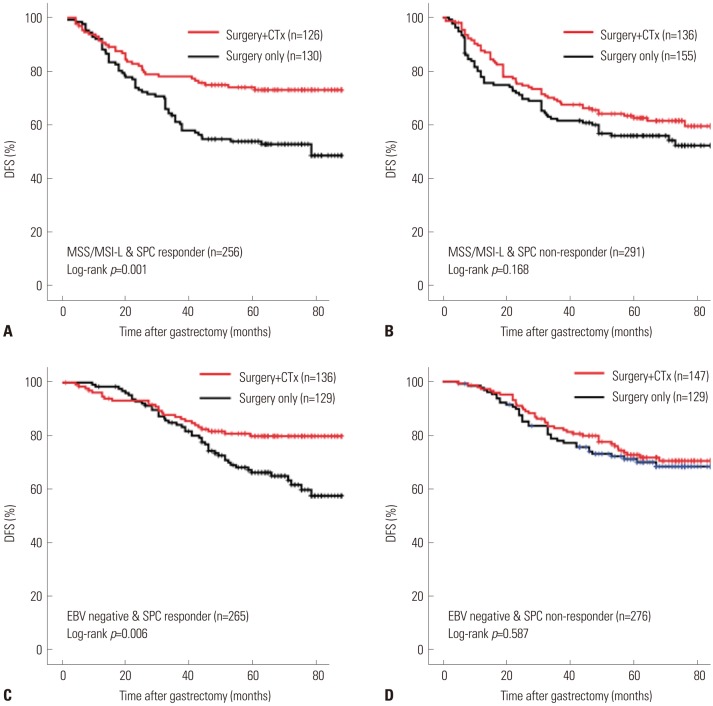
Table 1
Clinical Characteristics of Entire Cohort
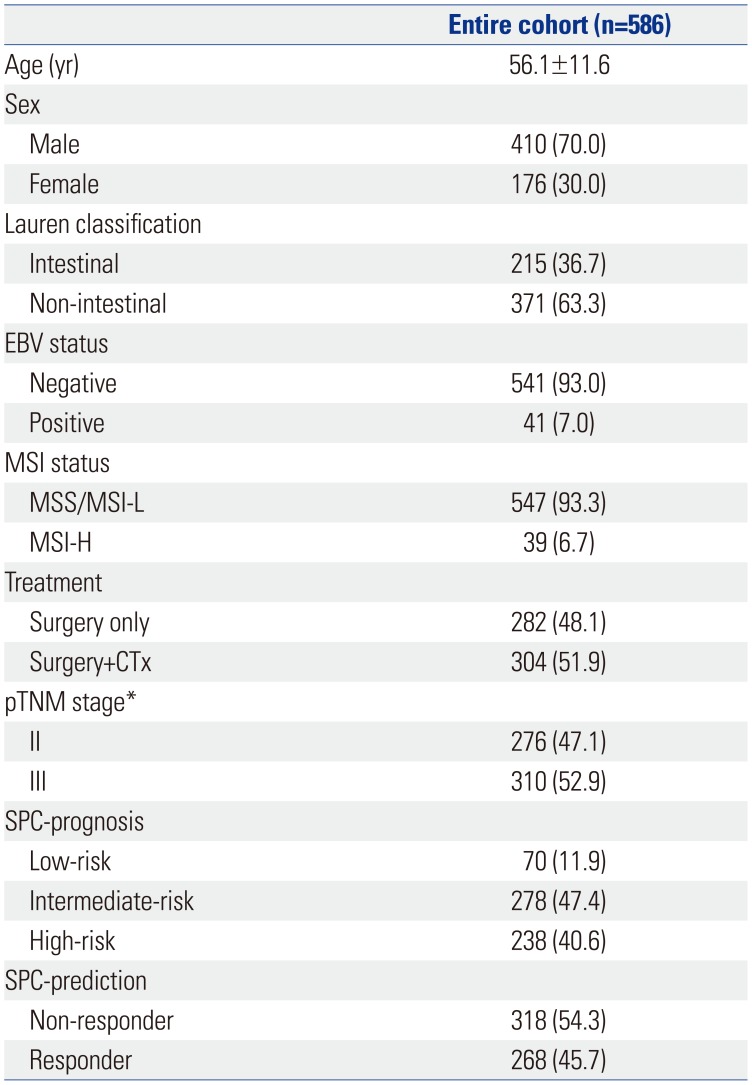
EBV, Epstein-Barr virus; MSI, microsatellite instability; MSS, microsatellite stable; MSI-L, microsatellite instability-low; MSI-H, microsatellite instability-high; CTx, adjuvant chemotherapy (capecitabine plus oxaliplatin); SPC, single patient classifier.
Data are expressed as mean±standard deviation or as n (%).
*According to American Joint Committee on Cancer 6th edition.
Table 2
Clinical Characteristics of Patients according to EBV Status
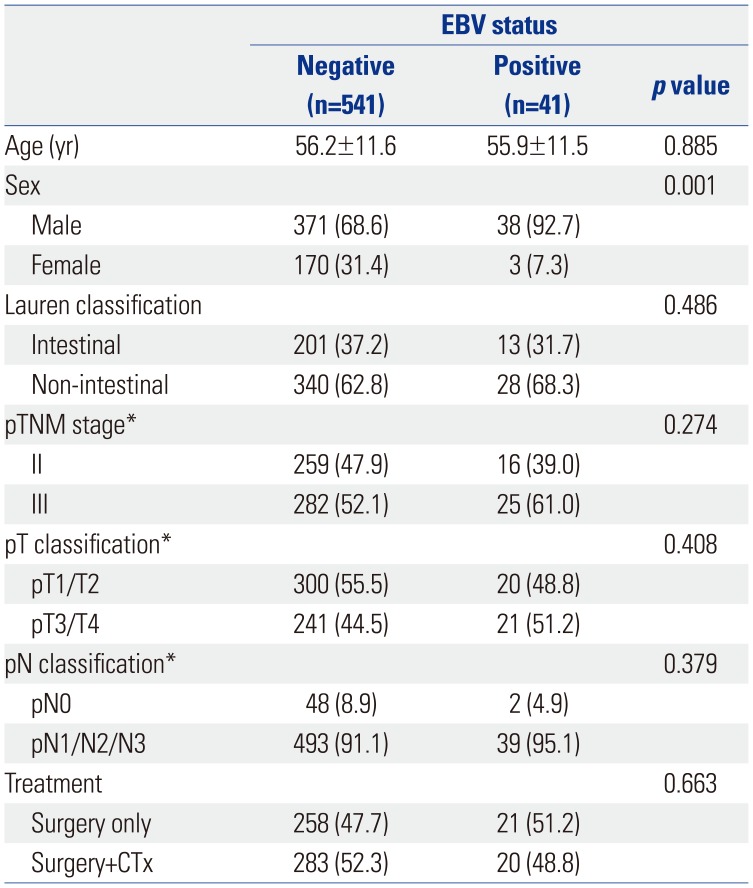
Table 3
Associations between SPC, MSI, and EBV Status

Table 4
Disease-Free Survival Analyzed by a Multivariate Cox Proportional-Hazards Model
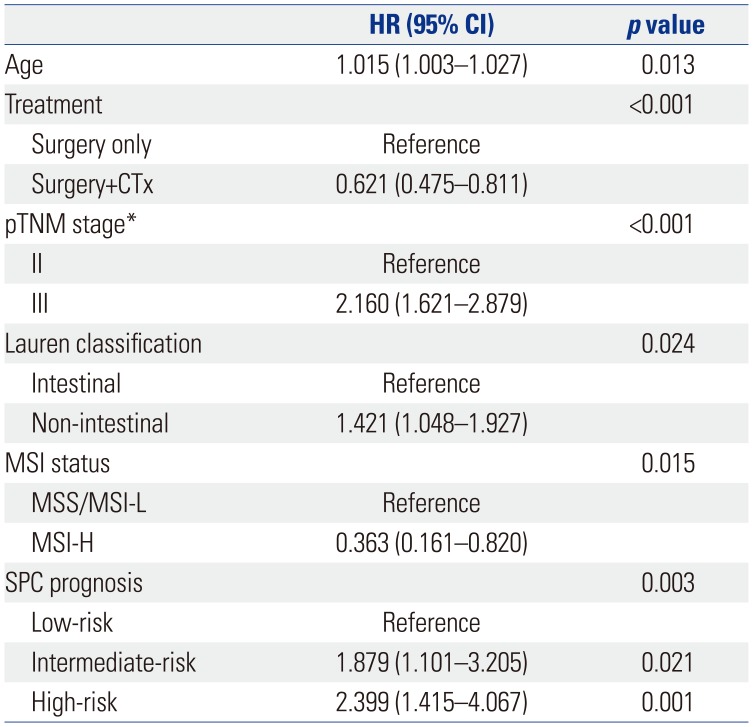
HR, hazard ratio; CI, confidence interval; CTx, adjuvant chemotherapy (capecitabine plus oxaliplatin); SPC, single patient classifier; MSI, microsatellite instability; MSS, microsatellite stable; MSI-L, microsatellite instability-low; MSI-H, microsatellite instability-high.
*According to American Joint Committee on Cancer 6th edition.




 PDF
PDF ePub
ePub Citation
Citation Print
Print



 XML Download
XML Download